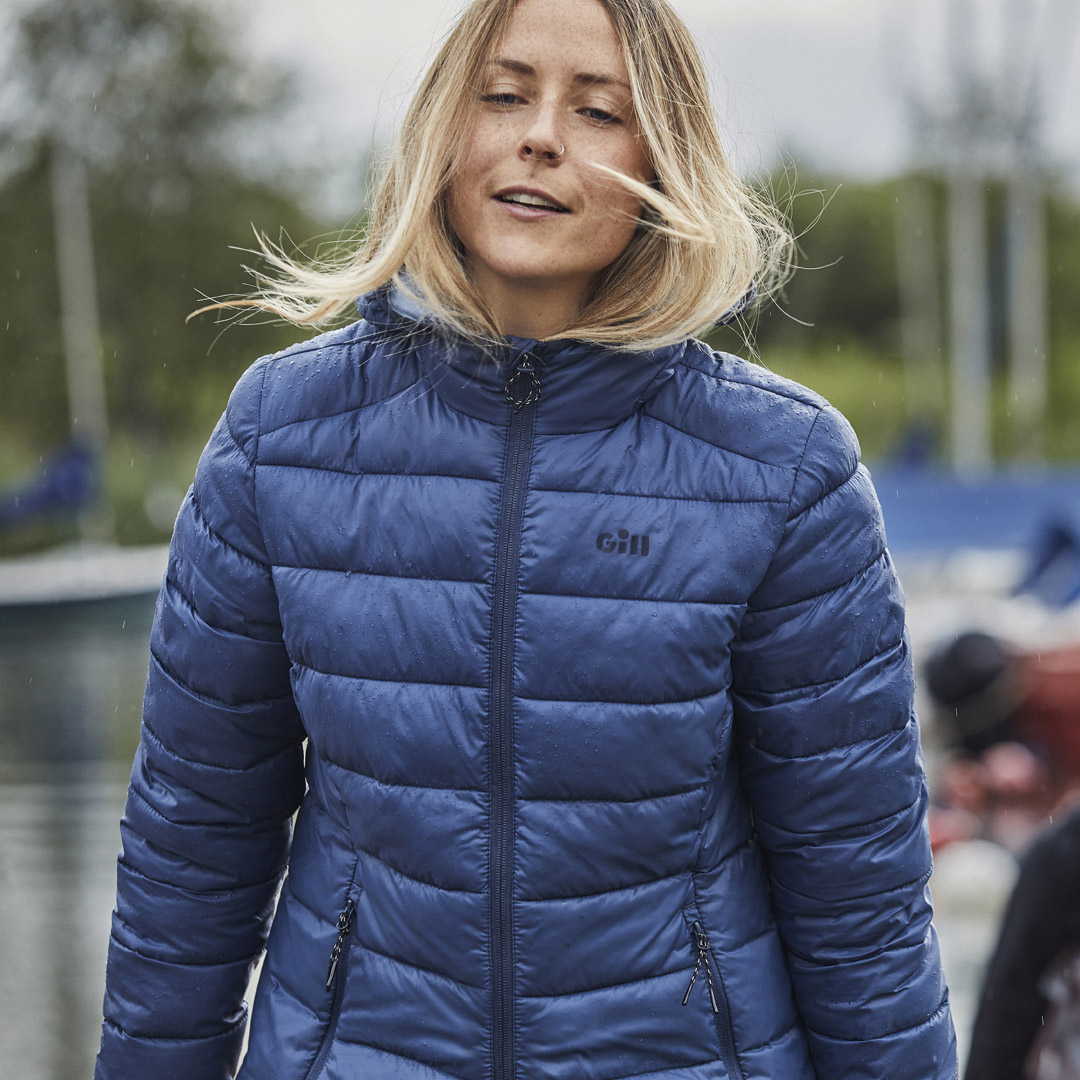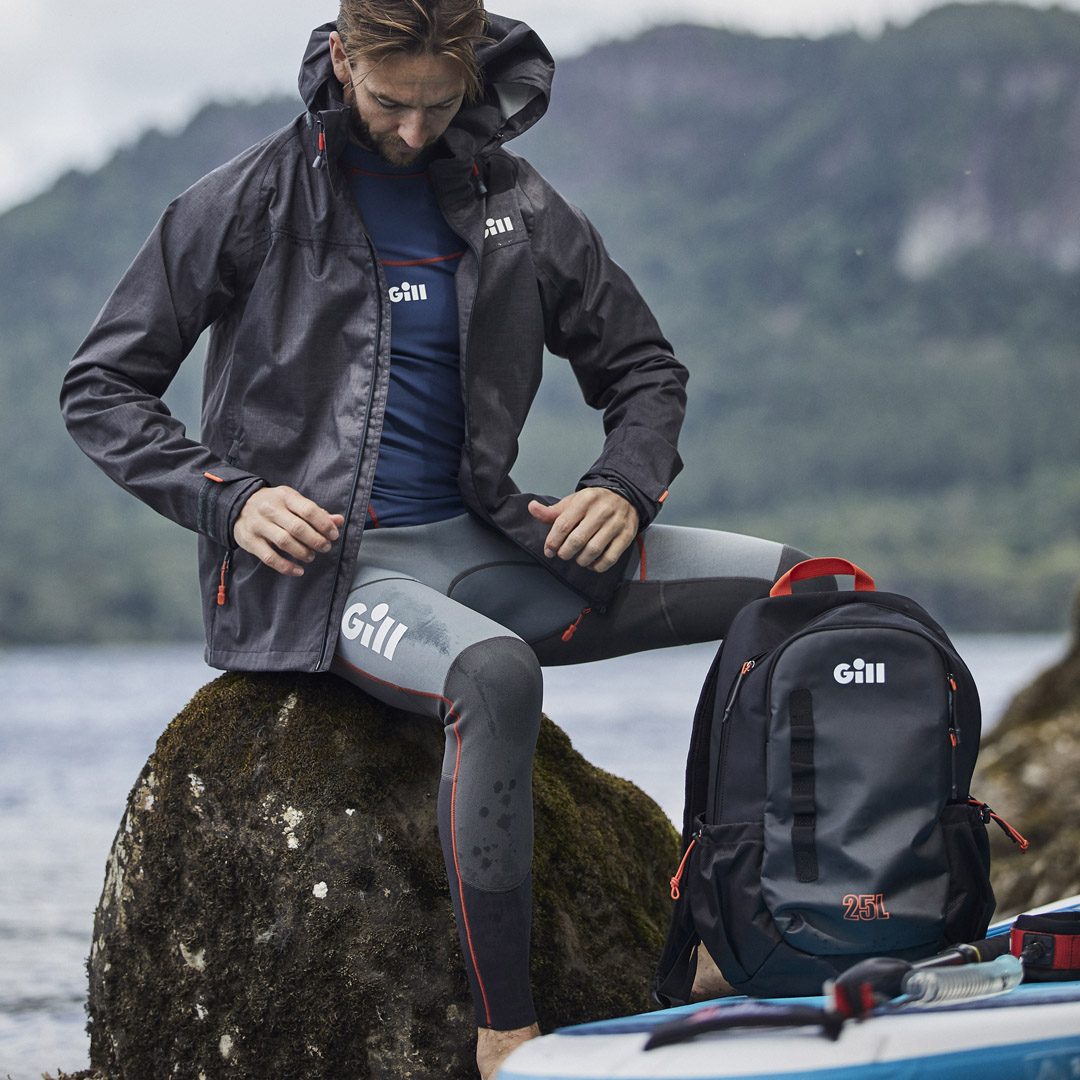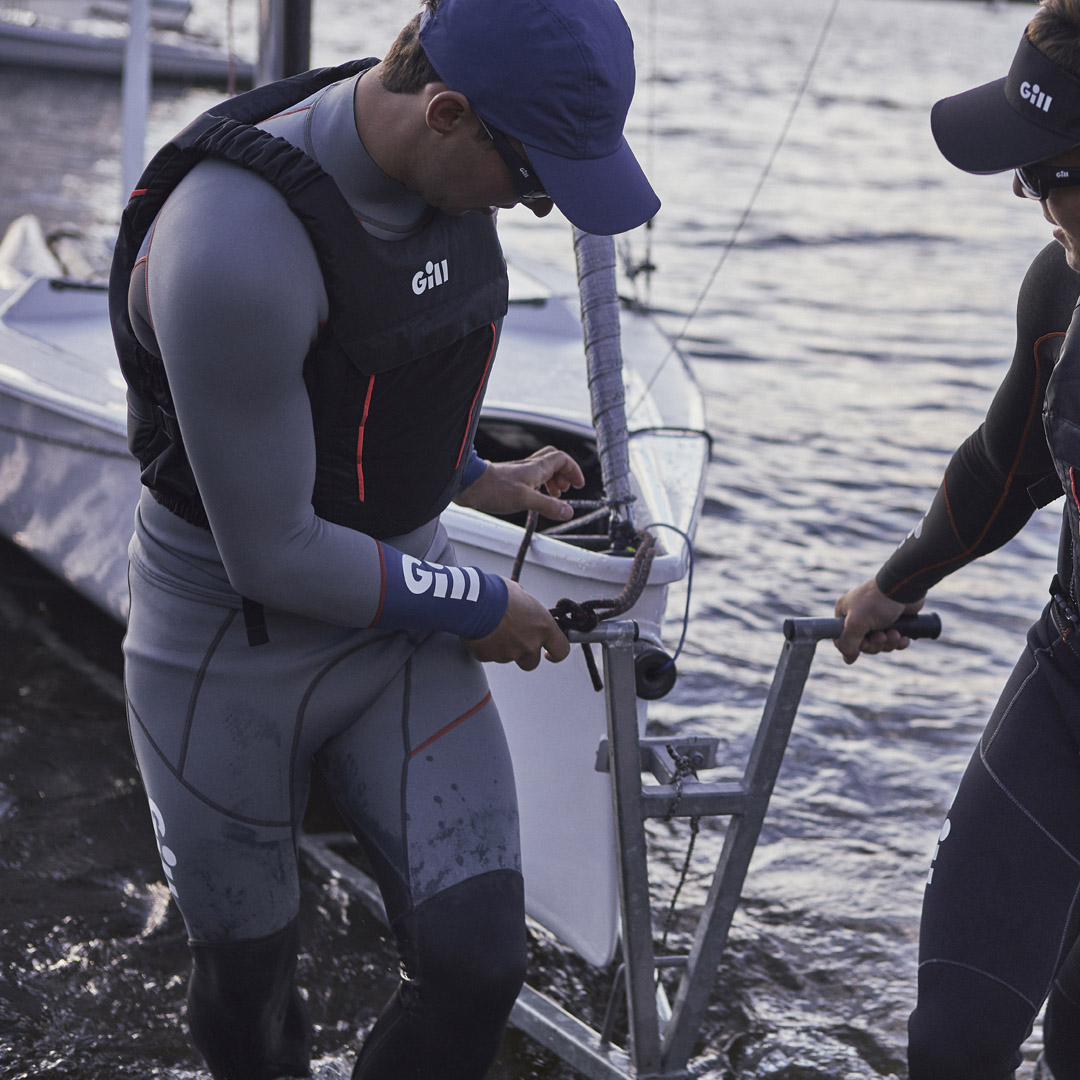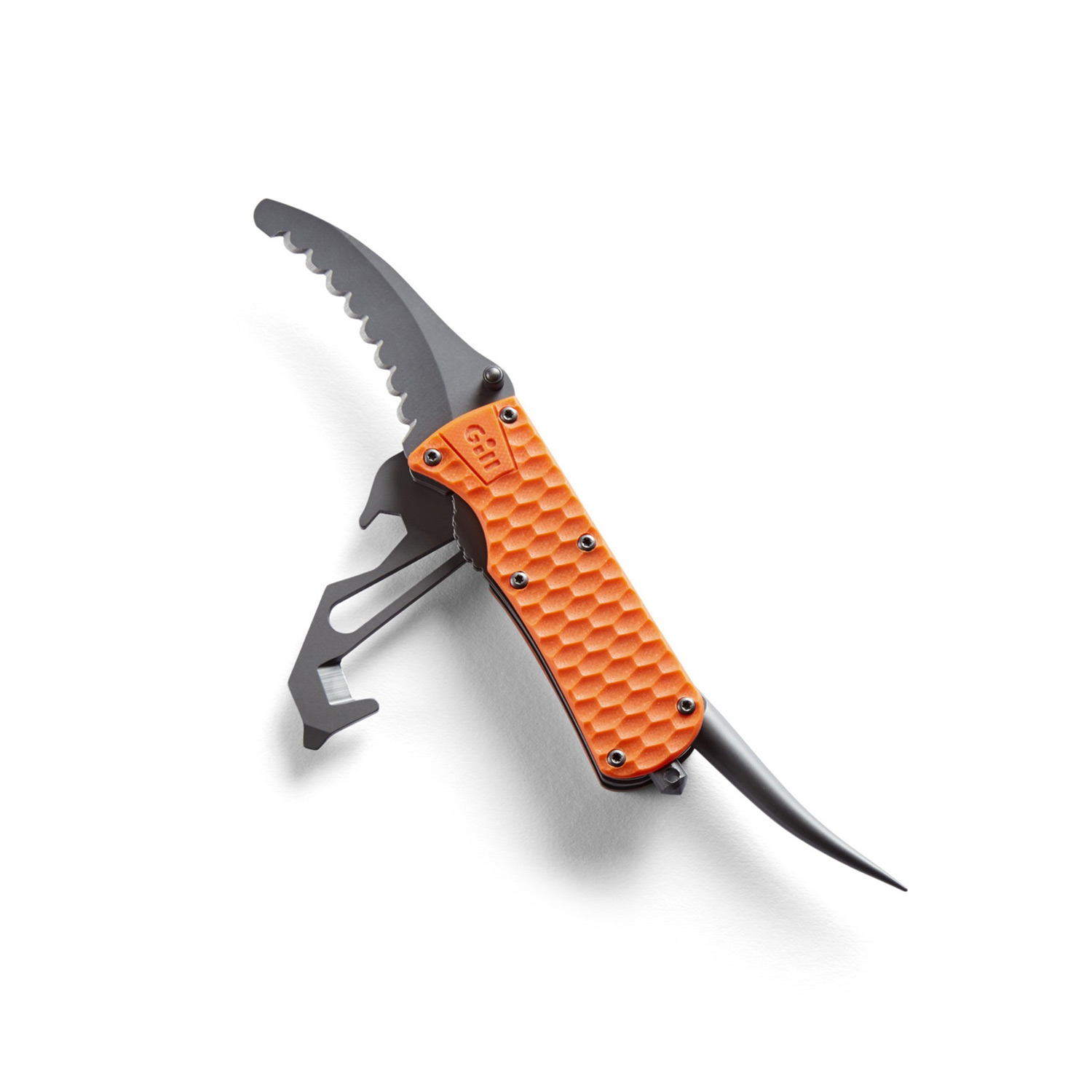Gill's Summer Product Care Tips
31st Jul 2020
Now the weather is warming up again, Gill have put together 10 Product Care tips so you can be fully prepared for your Summer adventures!
Trusted for over 40 years, Gill has grown into an established technical apparel brand meeting consumer needs both on and off the water and continues to combine innovative design with the latest fabric technology to increase the performance of its range. Our guidelines will ensure your Gill products are maintained to the best standard they can be.
Make sure to always check the guidelines stated on each product wash care label.
CLEANING WATERPROOF PRODUCTS

Cleaning Waterproof Products
After multiple use of your waterproofs, there will be a build-up of excessive dirt, body oils and abrasion from those adventures in the outdoors. Your Gill products will be in need of some serious TLC!
It is a common myth that waterproof products should not be laundered, many believe that the process can damage the chemical finish… we here at Gill actively promote the opposite.
The DWR (durable water repellent) finish that we apply to our products are naturally re-activated by applying warm heat, removing the immediate requirement for re-proofing sprays or washes.
Pre-Wash
Ensure that all valuables are removed from pockets
All zips must be securely fastened
Washing
Only wash one garment at a time, removing the risk of damage
Always use a non-biological detergent. The chemicals used in biological detergent are often too abrasive and can damage the chemicals used in our DWR finish
Care tip: Always remember to check the wash temperature stated on your products care label
Drying
Ensure that all excess water is shaken off before placing in the tumble dryer
Choose a low heat setting, if the temperature is too high it may damage the seam tape
Once laundered, water will now bead off the face of the fabric. This indicates that the DWR is restored.
If the laundering process does not provide the beading effect then we would recommend using our own Re-proofers:
https://gb.gillmarine.com/footwear-proofer/
CLEANING DOWN & INSULATED PRODUCTS

Cleaning Down and Insulated Products
Many think that Down is hard to care for and that washing can cause a lumpy, flat and ruined product. This is not the case! By following our carefully put together steps, we promise your jacket will look good as new.
Pre-Wash
Ensure that all valuables are removed from pockets
All zips must be securely fastened
Washing
Only wash one garment at a time, removing the risk of damage
Always use a non-biological detergent. The chemicals used in biological detergent are often too abrasive and can damage any coating applied to the product
Care tip: Always remember to check the wash temperature stated on your products care label.
Drying
Carefully Squeeze any excess water from the product before placing in the tumble dryer
Add 2-3 drying balls to the load (tennis balls also work perfectly)
Choose a low heat setting (make sure to double check the temperature on your products care label). Too high of a heat setting can damage the down feathers
Once the cycle is finished, place the product on a flat surface and pat down with your hands, this will help to free up the down feathers and avoid clumping
Repeat this process until the product is fully lofted
If there clumps of down can still be felt, then this is an indication that the product is not completely dry. Repeat the drying process
MOULD REMOVER

Mould Remover
Mould growing on waterproof garments is a common occurrence and happens when products are stored in a damp, humid environment for some time.
Pre-Wash
Fill a bucket (or kitchen sink) with warm water
Add ½ cup of white vinegar and ½ cup of Oxi Action in Wash Stain Remover
Mix until everything is dissolved
Wash
Submerge your waterproof garment into the bucket
Take a soft bristled brush (an old nail brush is ideal), and gently scrub the mould stains
Drying
Once you have scrubbed all of the stains, remove your product from the water and ensure any excess liquid is shaken off
Place the product on a flat surface and leave the garment to air dry, preferably outdoors - avoid leaving in direct sunlight
CLEANING BAGS

Cleaning Bags
Bags accompany all of your adventures, getting thrown, heaved and hauled around. It will be first on the list for a good clean!
To give your bag a freshen up you will need;
Mild soap (no fragrances or other additives as these can damage the chemical finishes on the fabric)
Lukewarm water
Clean sponge or cloth
Soft nylon- bristled brush or clean toothbrush
Wash
Wet the sponge/cloth and place a small amount of soap onto it
Use the sponge/cloth to wipe all areas of the bag; inside and out
Use the soft brush for any stubborn dirt areas
Drying
Leave the bag to air dry, preferably outdoors before sealing back up- avoid leaving in direct sunlight.
CLEANING YOUR WETSUIT

Cleaning your Wetsuit
After those long days on the water, you need to ensure your wetsuit is clean so you can enjoy it just as much next time!
Perhaps an obvious tip to the more seasoned wearer but we do not recommend placing your wetsuit in a washing machine. The machine cycle can damage the integrity of the neoprene.
Gill recommends the following;
Pre-Wash
Turn the wetsuit inside out
Wash
Use lukewarm water to hand wash, do not use soap or washing detergent as this will be absorbed by the neoprene and release once wet again in the future
Ensure that areas such as the underarm and crotch are rinsed well
Drying
Hang the wetsuit on a hanger and air dry- preferably outside however avoid leaving in direct sunlight
Ensure that the product is completely dry before storing
Do not store this product in a warm and humid environment
BUOYANCY AID MOT

Buoyancy Aid MOT
It is important to give your buoyancy aid a quick once over before use to ensure that all elements are intact to provide the ultimate protection and safety;
MOT Check
Check there are no rips in the main body fabric
Feel around the edges of the inner foam to ensure that no pieces have broken
Check zips are in working order and do not stick
Ensure clips are free of dirt and not broken
Check that the webbing is not frayed or damaged
MARINE TOOL CARE

Marine Tool Care
Not to be forgotten, keeping your tools clean is it important to prevent rust and increase the longevity of the product.
For the best care, Gill recommends;
Care
Regularly wipe all blades and tools with an oiled cloth
Occasionally, oil the locking and folding mechanisms of your Marine Tool with a drop or two of oil
Unfold all mechanisms of your tool and clean out all sand and grit
Sharpen any dull knife blades (dull blades can be dangerous)
After contact with seawater you should rinse thoroughly with fresh water and dry completely inside and out.
SAIL CLEANING

Sail Cleaning
Now that your sails are taking a rest from the wind and water then what better time to give them a clean!
You will need:
Scrubbing brush
Warm water and detergent
Hose or jet wash
Pre-Wash
Lay the sails out
Wash
Scrub heavily soiled areas with a scrubbing brush and detergent
Gentle jet wash (or hose) all over
Leave to soak overnight
Gentle jet wash again
Repeat as necessary
FOOTWEAR CLEANING - RUBBER & NEOPRENE

Footwear Cleaning- Rubber and neoprene boots
Not only do you want to keep your footwear free of grit and dirt, you also want to protect the surface of your boat.
Here are Gill’s best ways to keep your footwear clean;
You will need
Lukewarm water
Clean sponge or cloth
Soft nylon- bristled brush or clean toothbrush
Method
Remove the insole if present
Wet the sponge/cloth
Use the sponge/cloth to wipe all areas; inside and out
Use the soft brush for any stubborn dirt areas
Flex the boot at the toe to ensure that all dirt and grit are removed from seams or panels
Drying
Stuff the boots with newspaper and leave to air dry- outdoors is preferable however ensure that they are not left in direct sunlight
CARING FOR YOUR DRYSUIT

Caring for your Drysuit
Although this product is made of 95% waterproof fabric, we do not recommend that you launder this in the same way as a waterproof product.
Gill Drysuits incorporate the neoprene collar and cuffs which need to be cared for differently.
Gill recommends the following wash instructions;
Pre-Wash
Open all zips so that the inside of the product can be accessed
Wash
Use lukewarm water to hand wash, do not use soap or washing detergent as this will be absorbed by the neoprene and release once wet again in the future
Drying
Hang the Drysuit on a hanger and air dry- preferably outside however avoid leaving in direct sunlight
Ensure that the product is completely dry before storing
Do not store this product in a warm and humid environment
#BoundByWater

